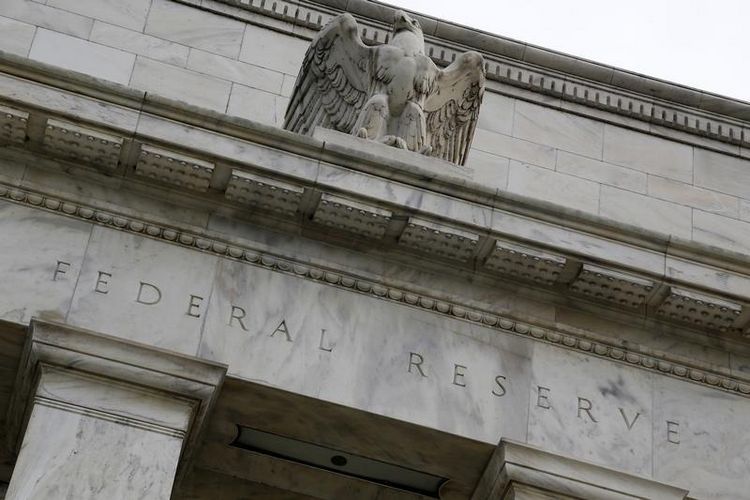The Federal Reserve has proved once again that investors can ditch the dog: they have a friend in the US central bank.
The Fed removed ‘patient’ from its statement but threw in enough sweeteners, notably cuts in anticipated rate increases and a downgrade to the level of unemployment it thinks would prompt inflation, to further reinforce the tradition of FOMC day as a kind of secular Christmas.
So while a June hike in interest rates, the first since 2006, is now a possibility, and a September rise seems highly likely, the Fed sent clear signals that any normalization will be slow and take much care over the wellbeing of households.
Stocks duly rallied, as they have on so many past Federal Open Market Committee days, with the S&P 500 rising in a straight line on the news to stand more than 1.2% higher than just before it. Bonds rallied as well, sending yields on US five-year Treasuries down by more than 11bp to 1.44%, a more than 10% fall.
Fed Chair Janet Yellen even did US companies, and their stockholders, a favour by drawing a line between the strong dollar and suppressed exports and inflation. That gave the dollar a push downward, which helps risk assets denominated in dollars.
“The word ‘patient’ was removed, but the meaning of patient remained,” Ward McCarthy, chief financial economist at Jefferies & Co, wrote in a note to clients.
Ruling out a rise in April, the Fed gave the impression that there was still ground to travel before hikes could begin:
“The Committee anticipates that it will be appropriate to raise the target range for the federal funds rate when it has seen further improvement in the labour market and is reasonably confident that inflation will move back to its 2% objective over the medium term,” the Fed said in its statement after the decision.
Comforting projections
Getting off of the zero-to-25bp floor is a priority, perhaps to give room for manoeuvre if ever the expansion ends, but almost everything else the Fed said on Wednesday was good news for risk assets.
The Fed reduced its analysis of how low unemployment can sink before inflation rises, NAIRU (non-accelerating inflation rate of unemployment), to between 5.0 and 5.2% from 5.2 to 5.5%. That’s key, because with unemployment now at 5.5%, this eases pressure to anticipate a wage inflationary spiral and raise rates in response.
The central bank also brought its projections of where rates will be in the future down closer to market expectations. The median for the end of 2015 is now 0.625%, down from 1.125% in December. The Fed now also expects growth of 2.5% this year, down from 2.8% in December, and just 2.2% in 2016.
This was all a pleasant surprise to equity markets, which had their best day since January. The big fear among risk investors, and this scenario may still play out, is that wages begin to recover and equities are caught in a vise of rising interest rates and declining profit margins. The Fed is in no hurry to tighten its part of the vise and could get caught back-footed if wages do show strength.
Santa Claus comes to town (8x a year)
To be sure, the wisdom of the Fed’s caution could be confirmed. Global conditions are hardly strong. China and Europe are exporting deflation. Housing in the US is not at all playing its traditional role as an engine of growth, and housing formation among the young is disappointing. The secular stagnation thesis has some merit.
Instead, I’d ask you to look not at what the Fed does, much less says, but on the effects it manages to achieve. There is no question that it has a nearly 30-year history of being very risk-asset-friendly.
A study by New York Fed economists David Lucca and Emanuel Moench published in The Journal of Finance in February shows that an enormous proportion of the equity risk premium, the extra return investors get for holding stocks, occurs in the window directly around Fed policy announcements.
Between 1994, when the Fed started making scheduled policy announcements, and 2011, fully 80% of US stocks’ excess returns occurred in the 24 hours before FOMC announcements.
And, as it was today, the afterglow period is good too. During the same period excess returns are “essentially” flat if you exclude the three-day window around the big day. Sell two days after and don’t buy back until a day before the next announcement.
Forget the old Wall Street saying about getting a dog if you need a friend: you’ve got the Fed.
(James Saft is a Reuters columnist. The opinions expressed are his own. At the time of publication he did not own any direct investments in securities mentioned in this article. He may be an owner indirectly as an investor in a fund. You can email him at jamessaft@jamessaft.com)

